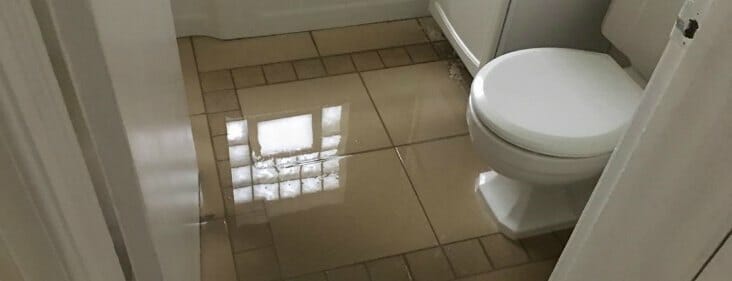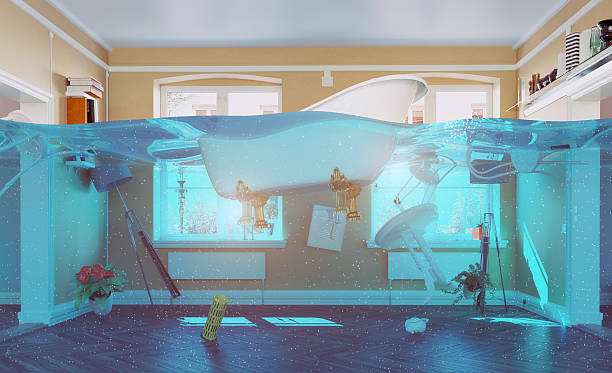Factors Contributing to Bathroom Water Harm
Factors Contributing to Bathroom Water Harm
Blog Article
We have discovered the article involving How to Repair and Prevent Bathroom Water Damage? down the page on the internet and reckoned it made good sense to write about it with you in this article.

Water damage usually takes place in the washroom as a result of the water utilized everyday. In some cases, the damage could be a little mold from the shower. Other times, it's massive damage on your flooring. Whatever it is, it is always good to know the reason as well as avoid it before it occurs.
This guide will certainly undergo some of the common sources of water damage in the washroom. We will additionally analyze what you can do to stop these reasons from damaging your washroom. Allow's dive in.
These are the usual factors you would have water damage in your washrooms and also exactly how you can detect them:
Excess Wetness
It's trendy to have that long shower and splash water while you dance around and also imitate you're doing, however often these acts can create water damage to your shower room.
Sprinkling water around can cause water to head to corners and also form mold and mildews. View just how you spread excess moisture around, as well as when you do it, clean it up to prevent damages.
Fractures in your wall ceramic tiles
Bathroom wall surface tiles have actually been specially created for that purpose. They shield the wall from moisture from individuals taking showers. Nonetheless, they are not unbreakable.
Occasionally, your shower room wall surface tiles split and enable some moisture to permeate into the wall. This can potentially ruin the wall surface if you don't take any type of activity. If you notice a split on your wall ceramic tiles, repair it right away. Do not wait until it ruins your wall surface.
Overruning toilets and sinks
As humans, often we make blunders that could trigger some water damage in the washroom. As an example, leaving your sink tap on might create overflowing as well as damages to various other parts of the restroom with wetness.
Likewise, a damaged toilet could trigger overruning. As an example, a broken commode handle or other parts of the cistern. When this takes place, it could damage the flooring.
As quickly as you discover an overflowing sink or bathroom, call a plumber to aid take care of it promptly.
Ruptured or Dripping Pipelines
There are numerous pipes carrying water to different parts of your restroom. Some pipelines take water to the commode, the sink, the faucets, the shower, and also lots of various other places. They crisscross the little area of the shower room.
Every so often, these pipes might obtain rustic and burst. Other times, human action could cause them to leak. When this happens, you'll find water in the corners of your bathroom or on the wall surface.
To detect this, keep an eye out for gurgling wall surfaces, mold and mildews, or mold. Call an expert emergency situation plumbing technician to repair this when it occurs.
Roof Leakages
Occasionally, the issue of water damage to the restroom might not come from the bathroom. For example, a roof leak can trigger damage to the bathroom ceiling. You can identify the damage done by looking at the water spots on the ceiling.
If you locate water spots on your ceiling, examine the roof to see if it's harmed. After that, call a professional to aid resolve the problem.
Conclusion
Water damage to your bathroom can be bothersome. Nevertheless, you can handle it if you avoid a few of the reasons pointed out in this guide. Call an expert emergency situation plumbing professional if you observe any extreme damage.
How to Repair a Water-Damaged Wall in the Bathroom
All you need to know to repair bathroom wall water damage – from identifying the water source to finishing the repair professionally. If you don’t act quickly to resolve a water damage problem, you could find that it develops into a mold issue and/or cause structural damage to your home. Follow this guide to repair your bathroom before it's too late.
All you need to know to repair bathroom wall water damage
Water damage is a common household problem, and one that, if left unrepaired, can quickly lead to structural problems and health issues. The two most likely rooms where water damage may occur is the bathroom and the kitchen – where water is used often and there is high humidity.
What is water damage?
It is easy to think of water damage as caused by a flood or leaking tap or burst water pipe. However, when water damage is assessed, there are three main categories into which water falls (as classified by the American National Standards Institute). These categories are defined as:
Category 1 Water – ‘Clear Water’
This is sanitary water. There is usually no major threat to health by washing with this water, drinking it, or inhaling if it is streaming. Most water that enters your home will be category 1 water, while most water leaving your home will be either category 2 or 3 water. It may also come from melting snow, rainwater and water tanks.
Damage caused by this type of water can usually be repaired or restored, though this doesn’t mean that there are no potential health issues.
Category 2 Water – ‘Grey Water’
This is contaminated water – sometimes considerably so – and will cause illness if consumed or if it comes into contact with your skin. Water damage in this category is often caused by overflows from toilet bowls, and damage to washing machines and dishwashers. While damaged items might still be repaired or restored after damage by grey water, it is more difficult and more expensive to do so.
If the water damage in your home has been caused by grey water, it is advisable to have repairs made by professionals.
Over time, grey water will deteriorate and become black water.
Category 3 Water – ‘Black Water’
Category 3 water, also known as black water, is highly contaminated and a great risk to health. This may contain raw sewage, heavy metals, and other toxic substances. It will smell terrible.
If this is the water that has caused damage in your bathroom, do not touch it. Stop the water flowing if possible, seal the room and call the experts: it really isn’t worth the risk of ill health and disease that could be fatal. It is very unlikely that items can be repaired or restored if they have been damaged by black water.
https://www.porterscleaning.com/blog/how-to-repair-a-water-damaged-wall-in-the-bathroom/

Do you enjoy more info about How to Repair and Prevent Bathroom Water Damage?? Create a remark below. We will be glad to listen to your opinion about this blog posting. We hope that you come back again soon. Appreciated our write-up? Please share it. Help another person find it. I truly appreciate reading our article about How to Repair and Prevent Bathroom Water Damage?.
Expertise at your service. Report this page